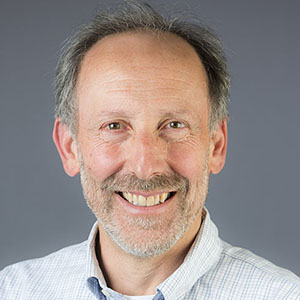The hydrological community has an important choice to make. From September 28 to October 27 we get to choose a new president for the hydrology session of AGU. While the impact on society as a whole might not be as big as the election of that other president (register! Vote!), the impact on our community of water loving scientists certainly is. The president of the Hydrology Section of the AGU sets the agenda of our section: which topics policy gets made on and which topics are put on hold for two years. And, as president of the largest section within the union, the voice of the HS president has a large impact on union level policy.
As the first ever student representative of hydrology (back in the day), as a convener of unconventional sessions at our annual convention, as an organizer of novel outreach events traditionally not seen as part of the scientific endeavour, as committee member on the OSPA committee for hydrology, I have first-hand experienced the difference that is made by a president that supports, champions and actively creates space for bottom up initiatives coming from inside the hydrological community.
Passing (begrudgingly) into the realm of “mid-career”, looking back I can definitely say that I have never met a senior scientist who is better at creating space for junior members of our community than prof. dr. John Selker. John knows that only supporting with advice is not enough. Real support for bottom up initiatives needs funding. It needs talking to the right people higher up the chain. It needs setting up structures: organisationally and sometimes even physically. That is how John created the Opens Lab at OSU where his students, fellow staff and visitors are given the space, both creatively and physically, to develop new sensing solutions for hydrology. That is how John created CTEMPS1, the NSF funded organisation that lends out specialised sensing equipment like Distributed Temperature Sensing units and Drones to fellow (mainly early career) scientist. That is how John created2 TAHMO, an independent organisation that is deploying and operating a network of low cost hydro-meteorological stations in sub-saharan Africa, currently at 500 stations and growing.
I’m happy, but not surprised that in his candidate interview John openly asks: “Are we spending as much time building the newest in our community as we are patting the most accomplished of us on the back?” and “Are our journals and publications providing the most potent venues for our results?”. On both these questions early career scientist from the hydrology section have been strongly voicing their opinion. John Selker is, based on my experience in working with him the last decade, the right person to make those voices be heard throughout the union and more than that: He will create the space for the ideas and solutions provided by the early career scientist of the hydrology section to become reality.
I therefore, in the most American thing I have ever done, strongly endorse John Selker for president of the Hydrology section of the AGU.
Voting is open now till October 27th and can be done by following the link found in your email. All members of the hydrology section of AGU should have received this email. If you haven't: check your SPAM. If you really haven't: email the AGU support. John is running against Praveen Kumar, also a highly valued member of our community. While I have made my case for John above, elections are about your own opinion: if you want to compare the statements of both candidates, this can be done here for Praveen Kumar and here for John Selker.
1 Together with Scott Tyler
2 Together with Nick van de Giesen and I’m very honoured to have been involved in the start of TAHMO.
- Blogs (163)
- Digitale data en economie (19)
- Geek en/of nerd (35)
- Onderwijs en politiek (40)
- Overig (34)
- Tinkering (knutselen) (71)
- Energie overdenkingen (1)
- English (39)
- forwardingPages (6)
- In de media (70)
- Huts Koffer, Volkskrant (36)
- overige media optredens (20)
- Radio 1: nieuws en co (12)
- Nieuws (168)
- Terugluisteren (8)
- Wetenschap (45)
- andermans werk (5)
- eigen werk (35)
- Blogs (163)
